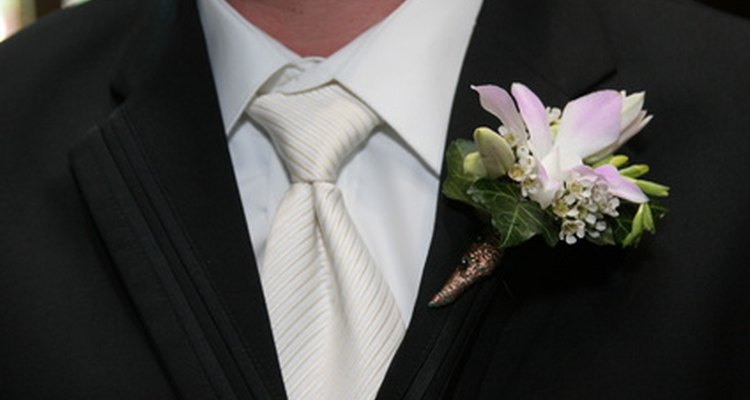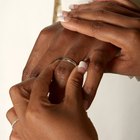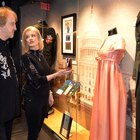
A boutonniere represents the quintessence of masculine luxury, and it makes a positive statement of personal flair and sophistication. The boutonniere has a more than five-century history as an accessory for men’s suits. Despite its long history, boutonniere is still part of the male costume, though mainly for special occasions such as weddings.
Origin
The history of the boutonniere dates to the 16th century, and "boutonniere" is the French word for “buttonhole flower.” Initially, the purpose of wearing a boutonniere was to ward off bad luck or evil. The boutonniere was the male equivalent of the bridal bouquet, having the same significance and purpose of protection against odors and diseases.
18th Century
In the 18th century, the male costume changed significantly. Fashionable wear became acceptable in almost all parts of Europe, and the ensemble of the English gentleman--frock coat, breeches and boots--was adopted by the French, too. In this period, large flowers began to be worn at the top buttonhole of frock coats. It soon became fashionable to leave the top buttons of the frock coats unfastened, falling back and forming the lapel, on which men fastened boutonnieres.
19th Century
The 19th century brought with it the enthusiasm for nature, specifically in the Romantic Movement, and the boutonniere became a very fashionable accessory as a splash of color for a sober outfit. Toward the end of the 19th century, the boutonniere was largely accepted as the mark of a man who was very careful in his dress. The choice of a fresh boutonniere was as important as choosing a pair of well-polished shoes. The flower on the lapel was on the list of men’s accessories of the day, which also included watch chains, cigar cases and jeweled pins.
20th Century
The idea of wearing a flower on the lapel survived the tumultuous times of World Wars I and II as a sign of remembering La Belle Époque. The movies of the first decades of the 20th century portrayed a style in which the boutonniere was omnipresent as a mark of elegance and masculinity. Cary Grant and Clark Gable became masculine prototypes, with their black suit always accompanied by a discreet boutonniere.
Present Day
Nowadays, boutonnieres are mainly part of the male wedding costume, and they often match the style of the bridal flowers. The groom can choose from a large variety of boutonniere types, from classic to bold. The groom, the groom’s men and the father of the bride all wear a boutonniere, adding a touch of elegance to the important event.
Related Articles

The Difference Between a Corsage & ...

Traditional African Wedding Attire

Children's Clothes in 1910

What Is the Traditional Dress Color for ...

What Do Women Pirates Wear?

What to Wear to a Formal Banquet

What Does the Corsage Symbolize?

The Meaning of a Flower Girl in a ...

The History of Denim Jackets

Hispanic Clothing History

Wedding Dresses of the 1920s, 1930s & ...

What Is the Meaning of a Ring in the ...

What Does a Purple Iris Symbolize?

Shawl Collar Vs. Lapel Tuxedo

Reasons to Get a Nose Ring

What Do Wedding Ushers Wear?

Symbolism of a Black Top Hat

Hat Trends of the Seventies

How to Dress Like Johnny Cash

What Do Chinese Women Wear?
References
- "The Boutonniere: Style in One's Lapel;" Umberto Angeloni; 2000
Writer Bio
Alice specializes in web content and blogging. She holds a Bachelor of Arts in History and she is currently a content writer and editor for various online companies specializing in tech and general content.
Photo Credits
tux, shirt, tie, coat, jacket, flower, boutonniere image by Paul Retherford from Fotolia.com